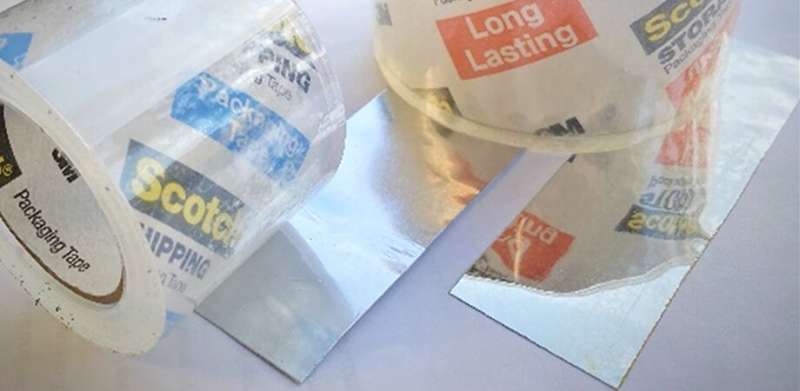DIY radiative cooler developed to serve as a research standard

The term "greenhouse effect" became part of public lexicon decades ago, thanks to the ongoing discourse on climate change. A natural phenomenon, the greenhouse effect describes how heat from the sun, in the form of radiation, is trapped by gases in the Earth's atmosphere. But a large amount of radiation is still lost to outer space, because these wavelengths are poorly absorbed by atmospheric gases. These wavelengths constitute long wavelength infrared (LWIR) radiation.
Exploiting this natural phenomenon to cool objects is known as passive radiative cooling. Put simply, passive radiative cooling involves placing an object under the sky to lower its temperature. Several materials like paints and polymers have been developed to ensure better radiative cooling, but these are difficult to fabricate and have variable performance.
However, in a recent study published in the Journal of Photonics for Energy (JPE), scientists from UCLA's Samueli School of Engineering have developed a do-it-yourself (DIY) radiative cooler made of household materials like Scotch tape and aluminum foil. The device is proposed as a research standard. "Our device is not only flexible, robust, scalable and low-cost, but it is also created using commercially available materials. This makes it attractive as a convenient and reproducible standard that possesses a selective emittance to measure other devices and materials against," says Aaswath P. Raman, a corresponding author of this study.
Both the adhesive and the plastic film used in Scotch tape have chemical bonds that can absorb and radiate heat in LWIR wavelengths, which makes them attractive choices for passive radiative coolers. The research team created a design that consists of two layers of tape on aluminum foil. They then took optical measurements of the cooler and found that the design had moderately selective infrared emittance. "Selectivity" here refers to the proportion of heat lost through LWIR radiation within a primary atmospheric window, as compared to radiating at all wavelengths. They also tested an alternate design using sputter-coated silver because it absorbs less solar radiation than aluminum foil.
They found that at night, the aluminum design could achieve a 7°C temperature drop below the ambient temperature. They also saw that the sputter-coated silver design could achieve a 2-3°C temperature drop in daytime. Finally, they tested the first design with a polyethylene convection shield (an added layer to reduce heat absorption), and found that they could achieve a temperature drop of up to 11°C. "The large temperature drop we achieved can be further used to generate electricity through thermoelectric processes," explains Jyotirmoy Mandal, the other corresponding author.
Perhaps the most significant portion of the study is its reproducibility. The wide availability and production consistency of 3M Scotch® tape make it a reliable standard for thermal coolers. Aluminum foil, too, is readily available with relatively constant properties across brands. These factors contribute to the argument for using the Scotch tape and foil design as a standard reference for all future designs of thermal coolers. There are also no clear boundaries right now to classify the selectivity of a thermal emitter. This design could serve as such a threshold.
JPE associate editor Peter Bermel notes, "This work presents a potentially impactful way to 'democratize' radiative cooling for a wide range of low-cost applications in research settings." To encourage its adoption as a standard, the research team has made the data from their extensive experiments on the optical performance of the design publicly available online.
More information: Xin Huang et al, Do-it-yourself radiative cooler as a radiative cooling standard and cooling component for device design, Journal of Photonics for Energy (2021). DOI: 10.1117/1.JPE.12.012112
Provided by SPIE




















